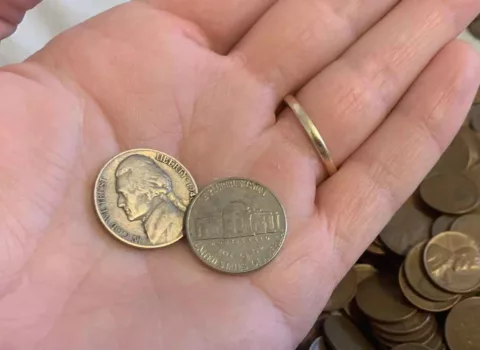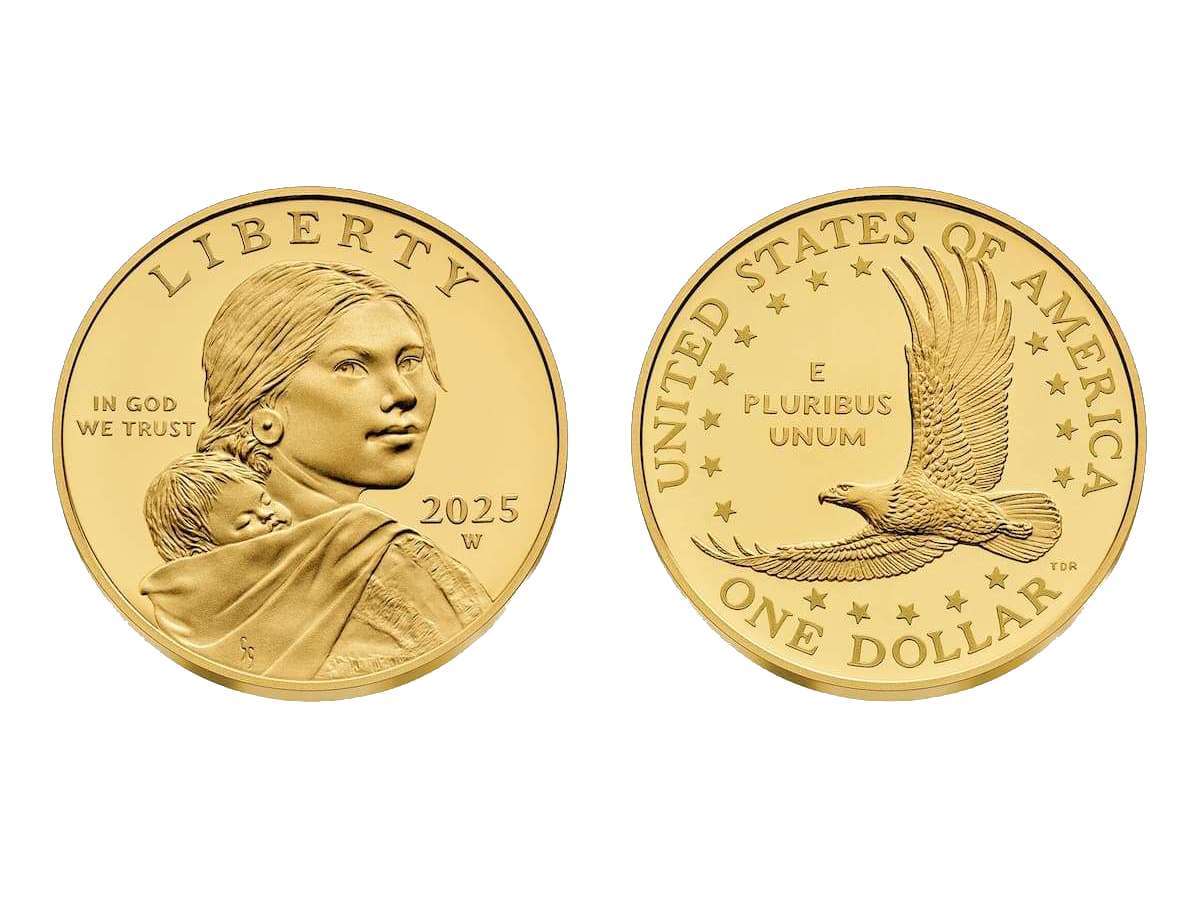
Found a 1946 nickel in your loose change? You’re probably wondering if 1946 nickels worth keeping at all.
The answer is YES!
All 1946 nickels are worth more than face value and should definitely be on your “keep and don’t spend” list. See why…
Why 1946 Nickels Are Worth Holding Onto
Old Jefferson nickels are highly collectible — including the 1946 nickel.
While 1946 nickels were made in huge numbers (over 200 million were struck), they’ve become scarcer in modern times and are getting difficult to find in spare change today.
Many people who collect old nickels will fill a coin album containing all the Jefferson nickels made — from the first in 1938 to those struck more recently. Therefore, having 1946 nickels is important for filling coin albums or coin folder holes.
How Much Is A 1946 Nickel Worth?
There are 3 different types of 1946 Jefferson nickels worth looking for.
Let’s look at the 3 types of 1946 Jefferson nickels and their values:
1946 Nickel Value (no mintmark)
The most common of the three 1946 nickels was struck at the Philadelphia Mint and has no mintmark. The lack of a mintmark is how you’ll know your 1946 Jefferson nickel was made in Philly.
The Philadelphia Mint struck 161,116,000 nickels in 1946. Perhaps 10% to 20% of these survive today — leaving plenty for coin collectors.
A typical worn 1946 Jefferson nickel is worth 7 to 10 cents — more than face value, to be sure. However, unless your 1946 nickel is in mint condition or contains an error or variety, it really won’t be worth a whole lot more than that.
Uncirculated 1946 Jefferson nickels are worth about $1 and up — with the most valuable of these being examples that show all 5 or 6 steps at the base of Monticello. A Full Steps Jefferson nickel is always the most desirable to collectors, and thus why a 1946 Full Steps specimen is the type of example that is the most valuable for the date.
One of the most valuable 1946 Full Steps Jefferson nickels was graded MS66+ by Professional Coin Grading Service (PCGS) and sold for $3,525.
1946-D Nickel Value (“D” mintmark)
The 1946-D Jefferson nickel was struck at the Denver Mint and bears a “D” mintmark — on the reverse of the coin just to the right of the Monticello building, near the rim of the coin.
Only 45,292,200 examples of the 1946-D nickel were struck. While that’s a much lower number than seen with the 1946 Philly nickel, the numbers are still sufficient enough to meet the demands of collectors.
Average circulated 1946-D Jefferson nickels are worth 10 to 25 cents apiece, while uncirculated specimens trade for $1.25 and up. The most valuable 1946-D Jefferson nickel ever sold was graded MS67 Full Steps by PCGS and took $8,625 at auction.
1946-S Nickel Value (“S” mintmark)
The rarest of the 3 major types of 1946 nickels bears an “S” mintmark on the reverse (tails side) — indicating it’s from the San Francisco Mint.
The mintage of the 1946-S nickel is just 13,560,000 pieces, making it decidedly rarer than the 1946 Philadelphia or 1946 Denver nickels.
A circulated 1946-S nickel is worth around 35 to 50 cents. Uncirculated specimens fetch about $1.25 apiece or more. The most expensive 1946-S Jefferson nickel ever to trade hands was graded by PCGS as MS67 Full Steps and commanded a staggering sum of $7,800.
A List Of Rare 1946 Error Nickels To Look For
While circulated 1946 Jefferson nickels may not be worth a ton of money, errors and varieties often are — and there are many to be found among the 1946 Jefferson nickels!
These are the 1946 nickel errors you are most likely to find…
1946 Doubled Die Nickel Error
There aren’t any major known 1946 doubled die nickels worth thousands of dollars as of this writing, but that doesn’t mean there aren’t minor doubled dies that are worth at least $20 to $50. Such doubled dies on old Jefferson nickels are usually seen in Thomas Jefferson’s eye on the obverse (head’s side) or on the reverse in the inscriptions, with “MONTICELLO” and “FIVE CENTS” frequently being two of the best places on the reverse of the Jefferson nickel to spot a doubled die.
1946 Off-Center Nickel Error
These are among the more commonly found errors on the 1946 Jefferson nickel, though it’s important to realize that not all off-center coins are worth big bucks. Yes, even those that are just 1% or 2% off-center are technically errors, but because they’re so common they don’t hold much value. The most valuable off-center errors are 10% to 20% or more off-center and on a 1946 nickel can be worth $25 to $50. A 1946 nickel that is 50% off-center but still shows its complete date and mintmark can bring $100 or more.
1946 Die Crack / Die Cud Nickel Error
Error coins with die cracks or die cuds are in high demand, often because these weird coins show some of the most dramatic oddities. A die crack forms on a die as it ages, and these anomalies will appear as unusual raised bumps or fracture-like lines across the coin. The value of a die crack error will hinge on the merits of the individual coin itself, but most often these pieces are worth $5 to $10 and up. A die cud, which is a die crack arising on the rim of the coin and appearing as a broad, flattish blob, is one of the most desirable types of die breaks and can bring $100 or more.
IMPORTANT: What Is The Grade Of Your 1946 Nickel?
To determine the true value of your 1946 Jefferson nickel, you first need to know what condition (or grade) your coin is in.
Grab a coin magnifier and a copy of the U.S. Coin Grading Standards book. Then, watch this video to see how to grade coins yourself at home:




